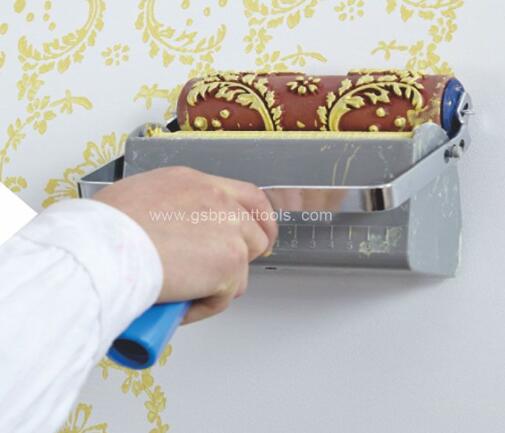Unleashing Creativity with Pattern Rollers: A Step-by-Step Guide
Pattern rollers have become a popular tool among artists, decorators, and DIY enthusiasts, offering a versatile and efficient way to add intricate designs and patterns to various surfaces. In this article, we will explore the ins and outs of using a pattern roller, unlocking the potential for creativity and transforming ordinary surfaces into works of art.
Understanding the Pattern Roller
A pattern roller is a specialized tool that features a cylindrical roller with raised patterns or designs engraved on its surface. It is typically made of rubber, foam, or other materials that allow for the even application of paint or other mediums.
Preparing the Surface
Before using a pattern roller, it is important to prepare the surface properly. Ensure it is clean, dry, and free from any debris or imperfections that could interfere with the pattern application. For some surfaces, a primer or base coat may be necessary to achieve the desired results.
Choosing the Right Roller
Pattern rollers come in a wide range of designs and sizes, allowing for endless creative possibilities. Consider the project at hand and select a roller with a design that complements your vision. From floral motifs to geometric patterns, there is a pattern roller for every style and preference.
Applying the Medium
The next step involves applying the medium to the pattern roller. Depending on the desired effect, you can use various mediums such as paint, ink, glaze, or even textured compounds. Pour a small amount of the medium onto a palette or tray, and then roll the roller back and forth in the medium to ensure even distribution.
Rolling the Pattern
Once the roller is adequately coated with the medium, it's time to roll the pattern onto the surface. Start at one end and apply even pressure as you roll the pattern roller across the surface. For larger areas, it is recommended to use a handle or extension pole for better control and to prevent strain.
Overlapping and Aligning
To create a seamless pattern, overlapping and aligning the roller strokes is crucial. Ensure that each pass slightly overlaps the previous one, maintaining a consistent pressure and speed. This technique ensures a continuous and uniform pattern throughout the surface.
Experimenting and Customizing
Pattern rollers offer endless possibilities for experimentation and customization. Feel free to explore different color combinations, layering techniques, or even using multiple pattern rollers together to create unique and personalized designs. Allow your creativity to flow and let the pattern roller be your artistic tool.
Cleaning and Maintenance
After completing your project, it is essential to clean the pattern roller thoroughly to maintain its longevity and prevent cross-contamination of colors or mediums. Depending on the medium used, cleaning can be as simple as rinsing with water or using mild soap. Take care to remove any residual paint or debris from the pattern roller to ensure optimal performance for future projects.
Conclusion
Pattern rollers provide a simple yet effective way to elevate surfaces from ordinary to extraordinary. Whether you're embellishing walls, furniture, fabrics, or any other creative project, these versatile tools allow you to unleash your artistic flair and add stunning patterns and designs with ease. By following the steps outlined in this guide and letting your imagination guide you, you can master the art of pattern rollers and transform any surface into a canvas of beauty and expression. We are a pattern roller supplier. If you are interested in our products, please contact us now!
















